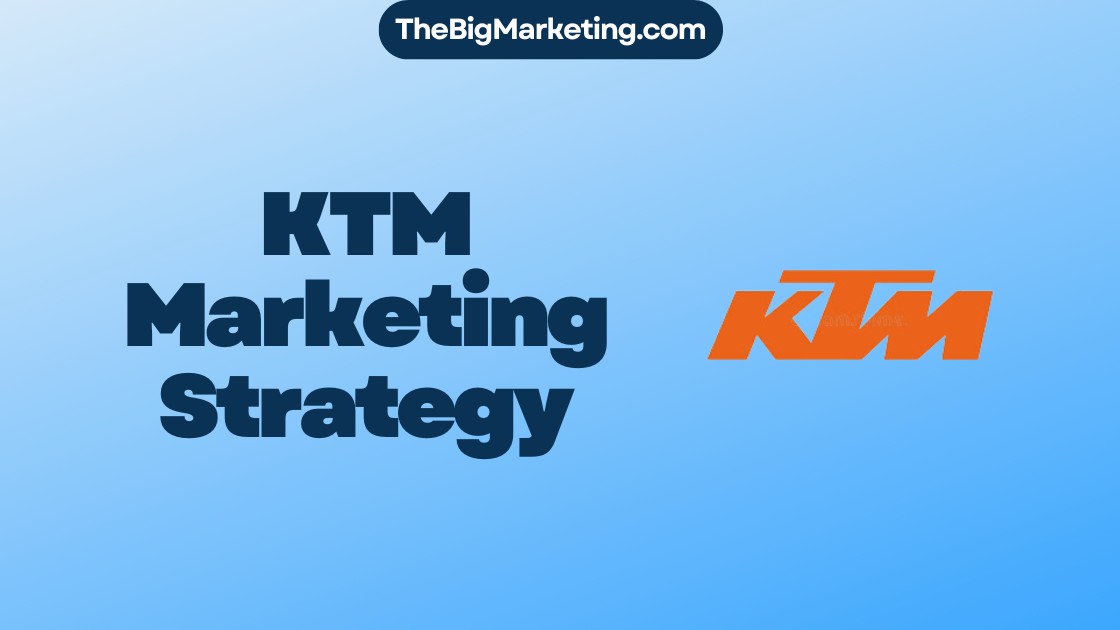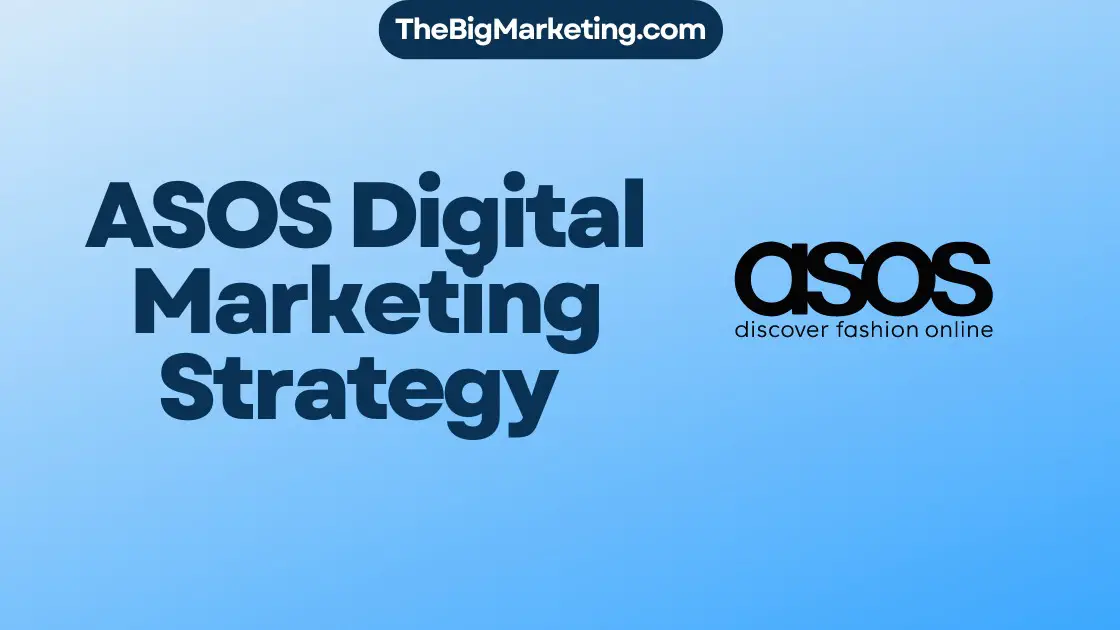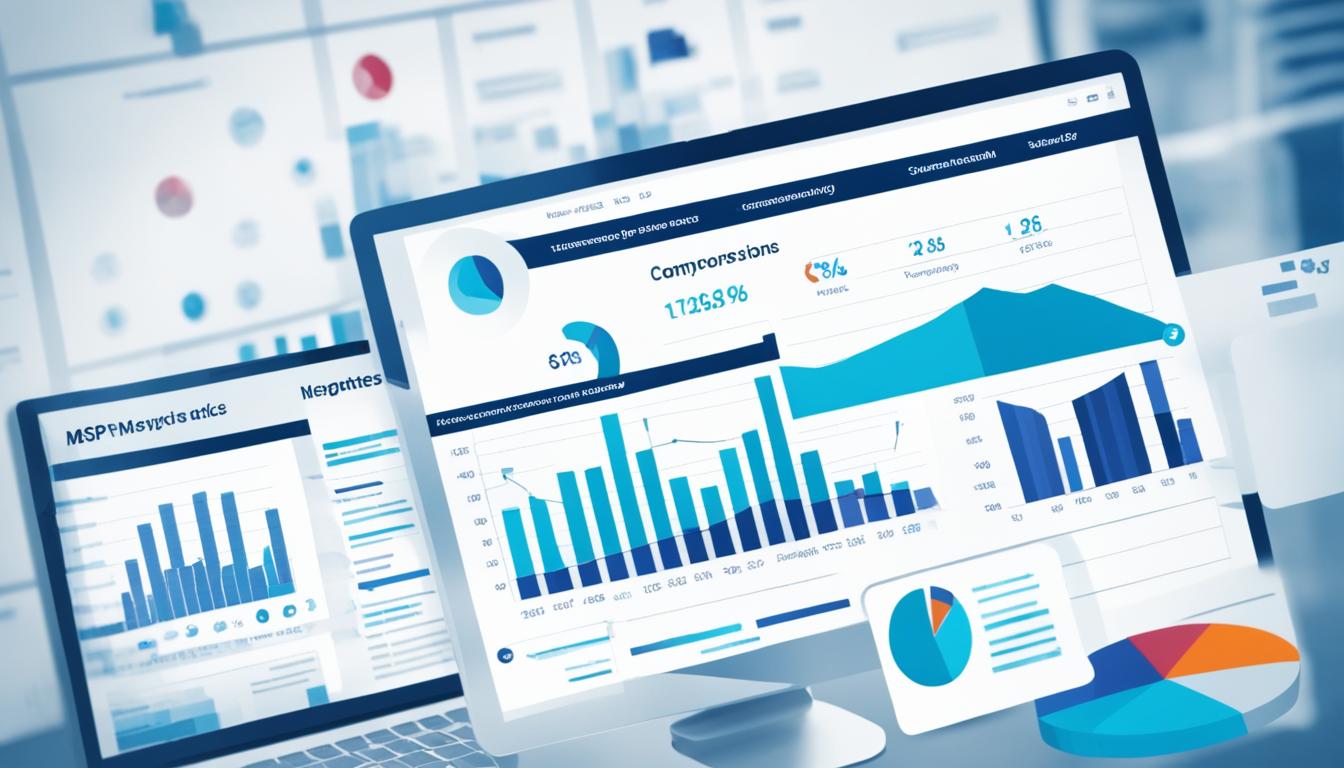Upstream marketing is a strategic process that focuses on identifying and fulfilling customer needs before developing a clear market segmentation map. It involves understanding the challenges faced by customers, creating products or services that address those challenges, and determining pricing and competitive advantages. Upstream marketing serves as a long-term plan that helps companies conceptualize future releases based on customer segments.
- Upstream marketing is a strategic process that focuses on identifying and fulfilling customer needs before market segmentation.
- It involves understanding customer challenges, creating solutions, and determining pricing and competitive advantages.
- Upstream marketing helps companies conceptualize future releases based on customer segments.
The Importance of Upstream Marketing
Upstream marketing plays a crucial role in business success by expanding the playing field and creating new revenue streams. It allows companies to identify and capitalize on unmet customer needs, leading to improved business performance. By focusing on upstream marketing, companies can create uncontested market spaces and build strong brands. It helps in strategic planning and provides substantial growth opportunities beyond the core business.
Upstream marketing is about looking ahead and understanding the evolving needs of customers. Instead of solely focusing on promoting existing products or services, upstream marketing takes a proactive approach to identify emerging trends and shifting customer preferences. By engaging with customers early on, companies can develop innovative solutions that meet their needs and capture untapped market potential.
This approach not only helps companies differentiate themselves from competitors but also positions them as industry leaders. By understanding the importance of upstream marketing, companies can create strategies that align with changing market dynamics and anticipate customer demands. This enables them to stay one step ahead and establish a competitive advantage.
Moreover, upstream marketing enables companies to build strong brands that resonate with their target audience. By investing in market research and understanding customer preferences, companies can create compelling brand messaging and value propositions. This helps in establishing an emotional connection with customers and fostering loyalty.
With upstream marketing, companies can also identify untapped market spaces where they can operate without direct competition. By identifying niche market segments and addressing their specific needs, companies can position themselves as the go-to solution provider. This allows them to enjoy higher profit margins and sustainable growth.
By focusing on upstream marketing, companies can lay a solid foundation for long-term success. It empowers businesses to develop products and services that truly add value to customers’ lives. With a customer-centric approach, companies can gain insights that drive product innovation, enhance customer satisfaction, and create a loyal customer base.
To summarize, upstream marketing is of utmost importance for businesses looking to thrive in today’s dynamic market landscape. It allows companies to expand their reach, create uncontested market spaces, and build strong brands. By prioritizing upstream marketing strategies, companies can position themselves as industry leaders and drive sustainable growth.
Upstream Marketing Strategies
In order to effectively implement upstream marketing, companies employ various strategies to understand customer needs, offer appropriate product or service solutions, and identify pricing and competitive advantages. Here are some key strategies to consider:
- Market Research: Conduct thorough market research to gain insights into customer behavior, identify gaps in the market, and understand emerging trends. This helps in developing targeted marketing messages and positioning strategies.
- Buyer Persona Development: Create clear and accurate buyer personas to understand the specific needs, preferences, and pain points of different customer segments. This allows for tailored product or service offerings that resonate with target audiences.
- Identifying Solutions: Pinpoint the key challenges faced by customers and develop innovative solutions to address these challenges. This involves thinking ahead and proactively meeting customer needs before they arise.
- Building a Brand Image: Develop a strong brand image that aligns with your target customers’ values and resonates with them. This enhances recognition, trust, and loyalty, ultimately leading to increased sales and market share.
- Developing New Markets: Identify untapped markets where there is a demand for your product or service. By expanding into new markets, you open up additional revenue streams and fuel business growth.
By implementing these upstream marketing strategies, companies can position themselves as market leaders, gain a competitive edge, and drive sustainable revenue growth. The insight-driven approach allows businesses to anticipate and fulfill customer needs, creating long-term value and customer satisfaction.
Upstream Marketing Examples
Upstream marketing involves various strategies to meet customer needs and capitalize on market opportunities. Let’s explore some real-world examples that highlight the success of upstream marketing.
Developing New Products or Services
One example of upstream marketing is when companies develop innovative products or services to fulfill customer needs. For instance, Apple introduced the iPhone, revolutionizing the mobile phone industry. By anticipating customers’ desire for an all-in-one device, Apple created a product that met their needs and disrupted the market.
Rebranding to Suit the Target Audience
Another example of upstream marketing is rebranding to better connect with the target audience. Puma, a sportswear brand, successfully repositioned itself by focusing on lifestyle and streetwear. By understanding market trends and customer preferences, Puma effectively transformed its brand image and captured new customer segments.
Identifying and Capitalizing on Market Opportunities
Companies that excel in upstream marketing identify and seize market opportunities to gain a competitive edge. Amazon is a prime example of leveraging upstream marketing for success. By continuously innovating and expanding its product offerings, Amazon has become a leader in e-commerce, cloud computing, and digital streaming services.
These examples illustrate the importance of conducting market research, analyzing customer behavior, and taking proactive steps to stay ahead of the competition. Upstream marketing enables companies to anticipate customer needs and create strategic plans that drive growth and market leadership.
By incorporating upstream marketing principles into their strategies, companies can unlock new revenue streams, build strong brands, and deliver products or services that customers truly value.
Upstream Marketing Benefits
Upstream marketing offers numerous benefits that contribute to improved business performance and long-term success. By implementing upstream marketing strategies, companies can tap into new revenue streams, outperform competitors, and gain a competitive edge in the market.
One of the key benefits of upstream marketing is the expansion of the playing field. By focusing on identifying and fulfilling customer needs before the development stage, companies can create uncontested market space. This allows them to differentiate themselves from competitors and establish a unique position in the market.
Upstream marketing also fosters customer obsession and a deep understanding of their needs and challenges. By thoroughly understanding their target audience, companies can align their marketing strategies to better serve their customers. This customer-centric approach leads to increased customer satisfaction and loyalty.
Furthermore, upstream marketing enables companies to proactively shape their business strategies based on customer insights. By conducting market research and identifying customer segments, companies can develop products or services that precisely address customer pain points and desires. This targeted approach results in higher customer engagement and increased sales.
Another significant benefit of upstream marketing is the exploration of new revenue streams. By continuously analyzing the market and staying ahead of emerging trends, companies can identify untapped opportunities and develop innovative products or services to capitalize on them. This not only boosts revenue but also expands the company’s reach and influence.
To summarize, the benefits of upstream marketing are vast and impactful. It empowers companies to improve business performance, expand their market presence, better understand customers, develop targeted strategies, and explore new revenue streams. By embracing upstream marketing, companies can position themselves for long-term success and stay ahead in today’s competitive business landscape.
Upstream Marketing Techniques
Upstream marketing techniques play a critical role in creating successful marketing campaigns and gaining a competitive edge in the market. By analyzing the market, identifying customer segments, and developing clear market segmentation maps, companies can strategically position their products or services to meet customer needs.
One of the primary techniques in upstream marketing is conducting thorough market research. This involves gathering data and insights about the target audience, their preferences, and their pain points. By understanding customer behavior and staying updated on industry trends, companies can tailor their marketing strategies to effectively reach their target market.
Another technique is product development. By continuously innovating and improving their offerings, companies can stay ahead of the competition. This involves identifying gaps in the market and developing products or services that fulfill customer needs. Companies like Apple have mastered this technique by consistently releasing new and upgraded products that resonate with their target audience.
Rebranding is also an effective upstream marketing technique. By refreshing their brand image, companies can attract new customers and retain existing ones. This involves revitalizing the brand’s visual identity, messaging, and positioning to better align with the target market’s aspirations and values. Companies like Coca-Cola have successfully employed rebranding techniques to stay relevant and appeal to changing consumer preferences.
Strategic planning is another vital technique in upstream marketing. By setting clear goals and objectives, companies can chart a course for long-term success. This includes analyzing market trends, competitor strategies, and customer insights to develop informed marketing strategies. Strategic planning ensures that companies are proactive in meeting customer needs and staying ahead of industry disruptions.
Examples of Upstream Marketing Techniques
| Technique | Description |
|---|---|
| Market Research | Gathering data and insights about the target audience and industry trends |
| Product Development | Creating new and improved offerings to fulfill customer needs |
| Rebranding | Refreshing the brand image to attract and retain customers |
| Strategic Planning | Developing long-term marketing strategies based on market analysis |
By leveraging these upstream marketing techniques, companies can position themselves as market leaders and create products or services that truly resonate with their target market. Upstream marketing sets the foundation for success by understanding customer needs, developing innovative offerings, and strategically planning for the future.
Upstream Marketing vs Downstream Marketing
When it comes to marketing, there are two important components that businesses need to consider: upstream marketing and downstream marketing. These two components work together to create a successful marketing strategy that encompasses both long-term planning and short-term tactics.
Upstream marketing focuses on the initial stages of the marketing process, where companies identify customer segments and the challenges they face. It involves strategic planning and fulfilling customer needs before developing a clear market segmentation map. Upstream marketing lays the foundation for downstream marketing by creating effective messaging strategies based on customer segments, challenges, and benefits.
Downstream marketing, on the other hand, involves the activities and tactics used to promote and sell existing products or services. It includes advertising, brand building, and communication strategies to enhance the acceptance of products or services that already exist.
While upstream marketing focuses on long-term strategic planning, downstream marketing focuses on short-term tactics and activities. Together, they create a cohesive marketing stream that takes into account both the big picture and immediate goals.
Comparing Upstream Marketing and Downstream Marketing
The table below summarizes the key differences between upstream and downstream marketing:
| Upstream Marketing | Downstream Marketing |
|---|---|
| Long-term strategic planning | Short-term tactics and activities |
| Fulfilling customer needs | Promoting and selling existing products or services |
| Identifying customer segments, challenges, and benefits | Enhancing the acceptance of existing products or services |
As seen in the table above, upstream marketing focuses on customer needs and strategic planning, while downstream marketing focuses on promoting and selling existing products or services. Both components are crucial for a comprehensive marketing strategy that covers both long-term goals and short-term tactics.
The Upstream Marketing Process
The upstream marketing process involves several steps that are essential for developing effective long-term marketing strategies. By understanding audience problems, identifying solutions, determining pricing and competitive advantages, and conceptualizing a product or service, companies can lay the foundation for successful marketing campaigns. Market research, customer feedback analysis, and competitor integration play important roles in this process.
Understanding Audience Problems
Upstream marketing begins with a deep understanding of the problems faced by the target audience. This involves extensive research and analysis of customer needs, pain points, and challenges. By gaining insights into their problems, companies can develop effective solutions that address their specific needs.
Identifying Solutions
Once the audience problems are understood, the next step is to identify suitable solutions. This requires brainstorming and evaluating various options to develop a product or service that effectively solves the identified problems. The solution should provide unique benefits and meet the expectations of the target audience.
Determining Pricing and Competitive Advantages
After identifying the solutions, it’s crucial to determine the pricing and competitive advantages. Companies need to assess the market demand, competition, and cost structures to establish accurate pricing strategies. Additionally, identifying and leveraging competitive advantages, such as unique features or superior quality, can help differentiate the offering in the market.
Conceptualizing a Product or Service
The final step of the upstream marketing process is to conceptualize the product or service. This involves designing the product or service, creating prototypes, and refining the offering based on market research and customer feedback. The goal is to develop a compelling product or service that effectively addresses the identified audience problems.
| Steps | Description |
|---|---|
| 1. Understanding Audience Problems | Conduct research and analysis to gain insights into the problems faced by the target audience. |
| 2. Identifying Solutions | Brainstorm and evaluate various solutions to develop a product or service that effectively addresses the audience problems. |
| 3. Determining Pricing and Competitive Advantages | Assess market demand, competition, and cost structures to establish accurate pricing strategies and identify competitive advantages. |
| 4. Conceptualizing a Product or Service | Design the product or service, create prototypes, and refine the offering based on market research and customer feedback. |
Downstream Marketing
Downstream marketing focuses on the implementation of short-term tactics and activities aimed at promoting and selling existing products or services. It plays a crucial role in generating immediate revenue and driving customer engagement. By leveraging advertising, brand building, and communication strategies, companies can enhance the acceptance and adoption of their offerings in the market.
To ensure the effectiveness of downstream marketing efforts, detailed planning, specific goals, and robust measurement methods are essential. Companies need to define clear targets and key performance indicators (KPIs) to track their progress and evaluate the success of their campaigns. This data-driven approach helps companies refine their marketing strategies and make informed decisions to optimize their return on investment (ROI).
One key consideration when implementing downstream marketing is the alignment with upstream marketing strategies. While upstream marketing focuses on long-term planning and the identification of customer needs, downstream marketing bridges the gap between planning and execution, actively promoting and selling the developed products or services. This integration ensures a seamless flow of marketing activities across the entire customer journey, maximizing the effectiveness of both upstream and downstream efforts.
Key Tactics in Downstream Marketing
Downstream marketing employs various tactics to create brand awareness, drive sales, and nurture customer relationships. Some of the key tactics include:
- Advertising campaigns targeting specific audience segments
- Strategic pricing and promotions to attract customers and incentivize purchases
- Creative branding initiatives to differentiate products or services from competitors
- Content marketing to educate and engage customers about the brand’s offerings
- Customer relationship management (CRM) strategies to build long-lasting connections
By utilizing these tactics, companies can effectively communicate the value propositions of their products or services to their target audience, increase brand loyalty, and drive sales.
| Tactic | Description |
|---|---|
| Advertising campaigns targeting specific audience segments | Creating tailored advertisements to reach and engage specific customer groups |
| Strategic pricing and promotions | Utilizing pricing strategies and promotional offers to attract and convert customers |
| Creative branding initiatives | Developing unique and compelling brand identities to differentiate from competitors |
| Content marketing | Producing informative and engaging content to educate customers about products or services |
| Customer relationship management (CRM) | Building and maintaining strong relationships with customers to drive loyalty and repeat business |
By deploying these tactics, companies can effectively implement downstream marketing strategies and achieve their business objectives.
The Role of CMO in Upstream and Downstream Marketing
The chief marketing officer (CMO) has a critical role in aligning both upstream and downstream marketing strategies. Their expertise and leadership guide the marketing stream, ensuring that both teams are on task and working towards common goals. The CMO plays a central role in integrating upstream and downstream marketing activities, facilitating effective planning and implementation.
One of the key responsibilities of the CMO is conducting research to understand customer needs and market trends. This research helps in identifying opportunities and challenges faced by customers in both upstream and downstream marketing. By staying updated on industry insights, the CMO can provide valuable insights for developing strategies and addressing customer pain points.
The CMO also leads and manages the marketing teams involved in both upstream and downstream marketing. They ensure that the teams have clear objectives, appropriate resources, and effective communication channels. By fostering collaboration and cross-functional cooperation, the CMO helps in aligning the efforts of both teams towards overarching marketing goals.
Integrating upstream and downstream marketing requires thoughtful planning and coordination. The CMO plays a pivotal role in this process, overseeing the integration of activities such as market research, product development, branding, and communication strategies. By ensuring strategic alignment, the CMO helps create a seamless flow between upstream and downstream marketing efforts.
In some cases, companies may choose to hire a fractional CMO or CMO consultant. These professionals provide specialized expertise in upstream and downstream marketing, helping companies optimize their strategies and achieve higher levels of success. Their deep industry knowledge and experience can provide valuable insights for strategic decision-making and overall marketing effectiveness.
Overall, the role of the CMO in upstream and downstream marketing is crucial for creating a cohesive marketing strategy. With their guidance and expertise, companies can effectively integrate both upstream and downstream marketing activities, leading to improved customer satisfaction, enhanced brand value, and increased market share.
The Value of Upstream and Downstream Marketing Integration
When upstream and downstream marketing work together, companies can create a seamless product development cycle that focuses on the needs of customers and drives tangible results. The integration of upstream and downstream marketing ensures a cohesive approach where long-term strategic planning aligns harmoniously with short-term promotional activities. By aligning these two components of the marketing stream, companies can effectively identify customer segments, challenges, and benefits, leading to the development of impactful messaging strategies and the achievement of overall marketing goals.
Conclusion
Upstream marketing is a pivotal component in driving long-term growth and achieving a competitive advantage in the market. By engaging in strategic planning, conducting market research, and identifying and fulfilling customer needs, companies can establish a strong foundation for success.
The integration of upstream and downstream marketing activities allows for the creation of focused campaigns that expand the playing field and tap into new revenue streams. By understanding customer challenges and desires, companies can develop products and services that resonate with their target audience. This customer-centric approach not only enhances brand loyalty but also ensures the continued relevance and profitability of the business.
As businesses navigate the evolving market landscape, it becomes increasingly clear that upstream marketing is a critical factor in shaping effective business strategies. By prioritizing upstream marketing, companies can stay ahead of the curve, identify untapped opportunities, and build strong brands that resonate with their customers. Ultimately, upstream marketing is essential for businesses seeking lasting market success and sustained growth.






